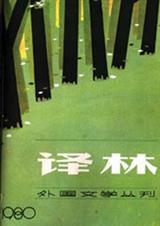30+mba-第11部分
按键盘上方向键 ← 或 → 可快速上下翻页,按键盘上的 Enter 键可回到本书目录页,按键盘上方向键 ↑ 可回到本页顶部!
————未阅读完?加入书签已便下次继续阅读!
have been jumbled together in the middle to net off the current assets
and current liabilities and so end up with a figure for the working capital。
‘Current’ in accounting means within the trading cycle; usually taken to be
one year。 Stock will be used up and debtors will pay up within the year;
and overdra。。 being repayable on demand also appears as a short…term
liability。
There are a number of other items not shown in the working capital
section of the example balance sheet that should appear; such as liability
for tax and VAT that have not yet been paid; and these should appear as
current liabilities。
Intangible fixed assets
There are a number of seemingly invisible items that nevertheless have
been acquired for a measurable money cost and so have to be accounted for:
。 Goodwill: This is where the price paid for an asset is above its fair
market price。 This is fairly mon in the case of acquisitions where
petition for a pany can push prices higher。
。 Intellectual property such as patents; copyright; designs and logos。
These items too are amortized over their working life。 So; for example; if a
patent is considered to have a 10…year life and cost £1 million to acquire; it
would be wri。。en down in the accounts by £100;000 a year。
Liverpool Football Club’s accounts (Table 1。9) show how a particular
type of ‘intellectual’ property is dealt with。 In this case it is footballers
being contracted in and out of the club。 The same principles apply to any
intangible asset。
The costs associated with the acquisition of players’ registrations are
capitalized as intangible fixed assets。 These costs are fully amortized in
equal instalments over the period of players’ initial contracts。 Where a
player’s contract is extended beyond its initial period; amortization is
calculated over the period of the extended contract from the date on which
it is signed。 Players’ registrations are wri。。en down for impairment when
the carrying amount exceeds the amount recoverable through use or sale。
Accounting for stock
Deciding on the stock figure to put into a balance sheet is a tricky calculation。
Theoretically it is simple; a。。er all; you know what you paid for
it。 The rule that stock should be entered in the balance sheet at cost or
Accounting 35
market…price; whichever is the lower; is also not too difficult to follow。 But
in the real world a business keeps on buying in stock so it has product to
sell; and the cost can vary every time a purchase is made。
Take the example of a business selling a breakfast cereal。 Four pallets
of cereal are bought in from various suppliers at prices of £1;000; £1;020;
£1;040 and £1;060 respectively; a total of £4;120。 At the end of the period
three pallets have been sold; so logically the cost of goods sold in the profit
and loss account will show a figure of £3;060 (£1;000 + £1;020 + £1;040)。 The
last pallet costing £1;060 will be the figure to put into the balance sheet;
thus ensuring that all £4;120 of total costs are accounted for。
This method of dealing with stock is known as FIFO (first in first out);
for obvious reasons。 There are two other popular costing methods that
have their own merits。 LIFO (last in first out) is based on the argument that
Table 1。9 Part of the balance sheet for Liverpool Football Club and Athletic
Grounds Plc
2006 2005
£’000 £’000
Fixed assets
Intangible assets (see note 10) 81;350 80;105
Tangible assets 34;947 36;811
Investments 3 3
Total 116;300 116;919
Note 10。 Intangible fixed assets
Cost
At 1 August 2005 134;706
Additions in year 41;753
Disposals in year (36;868)
At 31 July 2006 139;591
Amortisation
At 1 August 2005 54;601
Charge for year 24;636
Impairments in year 5;250
Disposals in year (26;246)
At 31 July 2006 58;241
Net book amount
At 31 July 2006 81;350
At 31 July 2005 80;105
36 The Thirty…Day MBA
if you are staying in business you will have to keep on replacing stock at
the latest (higher) price; so you might just as well get used to that sooner
by accounting for it in your profit and loss account。 In this case the cost of
goods sold would be £3;120 (£1;060 + £1;040 + £1;020); rather than the £3;060
that FIFO produces。
The third popular costing method is the average cost method; which
does what it says on the box。 In the above example this would produce
a cost midway between those obtained by the other two methods; in this
example £3;090。
All these methods have their merits; but FIFO usually wins the argument
as it acmodates the realities that prices rise steadily and goods move in
and out of a business in the order in which they are bought。 It would be
a very badly run grocer’s shop that sold its last delivery of cereal before
clearing out its existing stocks。
Methods of depreciation
The depreciation is how we show the asset being ‘consumed’ over its
working life。 It is simply a bookkeeping record to allow us to allocate some
of the cost of an asset to the appropriate time period。 The time period will
be determined by such factors as how long the working life of the asset is。
The principal methods of depreciation used in business are:
。 The straight…line method: This assumes that the asset will be ‘consumed’
evenly throughout its life。 If; for example; an asset is being bought for
£1;200 and sold at the end of five years for £200; the amount of cost we
have to write off is £1;000。 Using 20%; so that the whole 100% of cost is
allocated; we can work out the ‘book value’ for each year。
。 The declining…balance method: This works in a similar way; but instead
of an even depreciation each year we assume the drop will be less。
Some assets; motor vehicles for example; will reduce sharply in their
first year and less so later on。 So at the end of year 1; both these methods
of depreciation will result in a £200 fall; but in year 2 the picture starts
to change。 The straight…line method takes a further fall of £200; while
the declining…balance method reduces by 20% (our agreed depreciation
rate) of £800 (the balance of £1;000 minus the £200 depreciation so far);
which is £160。
。 The sum of the digits method: This is more mon in the United
States than in the UK。 While the declining…balance method applies a
constant percentage to a declining figure; this method applies a progressively
smaller percentage to the initial cost。 It involves adding up
the individual numbers in the expected life span of the asset to arrive at
the denominator of a fraction。 The numerator is year number concerned;
but in reverse order。
Accounting 37
For example; if our puter asset bought for £1;200 had an expected
useful life of 5 years (unlikely); then the denominator in our sum would
be 1+2+3+4+5 which equals 15。 In year 1 we would depreciate by 5/15
times the initial purchase price of £1;200; which equals £400。 In year 2
we would depreciate by 4/15ths and so on。
These are just three of the most mon of many ways of depreciating
fixed assets。 In choosing which method of depreciation to use; and in practice
you may have to use different methods with different types of asset; it
is useful to remember what you are trying to do。 You are aiming to allocate
the cost of buying the asset as it should apply to each year of its working
life。
Balance sheet and other online tools
SCORE (score 》 Business Tools 》 Template Gallery 》 Balance Sheet
(projected)) is an Excel…based spreadsheet you can use for constructing
your own balance sheet。 You can find guidance on depreciation; on
handling stock and on the layout of the balance sheet and profit and loss
account as required by the panies Act from the Accounting Standards
Board (frc 》 ASB 》 Technical 》 FRSSE)。 Accounting Glossary
(accountingglossary) and Accounting for Everyone (
accountingforeveryone 》 Accounting Glossary) have definitions of all
the accounting terms you are ever likely to e across in the accounting
world。
Package of accounts
The cash…flow statement; the profit and loss account and the balance sheet
between them constitute a set of accounts; but c



